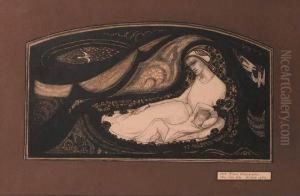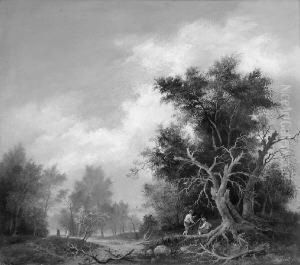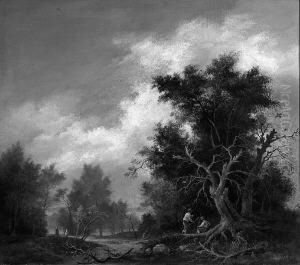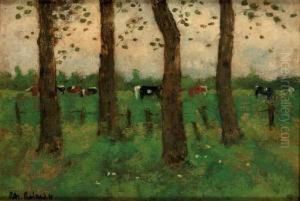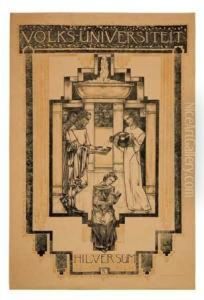Richard Nicolaas Roland Holst Paintings
Richard Nicolaas Roland Holst, often known as Rik Roland Holst, was a distinguished Dutch artist, one of the prominent figures in the field of visual arts in the Netherlands around the turn of the 20th century. Born on December 4, 1868, in Amsterdam, Roland Holst became widely recognized for his contributions to painting, graphic design, and his work as a lithographer, glass painter, and muralist.
As a student, Roland Holist attended the Rijksakademie van beeldende kunsten (State Academy of Fine Arts) in Amsterdam. His works were heavily influenced by the Arts and Crafts movement and by socialists’ views, which is reflected in his commitment to integrating art into everyday life and his belief in the social responsibility of the artist. He was married to the poet and socialist Henriette Roland Holst-van der Schalk, whose beliefs further influenced his work and led to collaborations that combined visual art and literature.
Roland Holst's art often carried symbolist and socialist themes. He was involved with the design of posters, books, and other materials for various socialist causes and organizations. His designs were characterized by their stylized forms and the use of ornamentation to enhance the symbolic and allegorical content. Aside from his political engagement, Roland Holst also taught at the Rijksakademie and influenced a new generation of Dutch artists.
Besides his graphic work, Roland Holst is well-known for his monumental works, including murals and stained glass windows for public and religious buildings. His dedication to art was not limited to his own practice; he also wrote extensively on art theory and criticism, contributing to the intellectual discourse on art in the Netherlands.
Richard Nicolaas Roland Holst passed away on December 31, 1938, in Bloemendaal. His legacy is preserved in the Netherlands through his numerous works that adorn public spaces, and he is remembered as a significant figure in Dutch art history, particularly for his efforts to merge art with social ideals and for his influence on the Dutch artistic community in the early 20th century.
